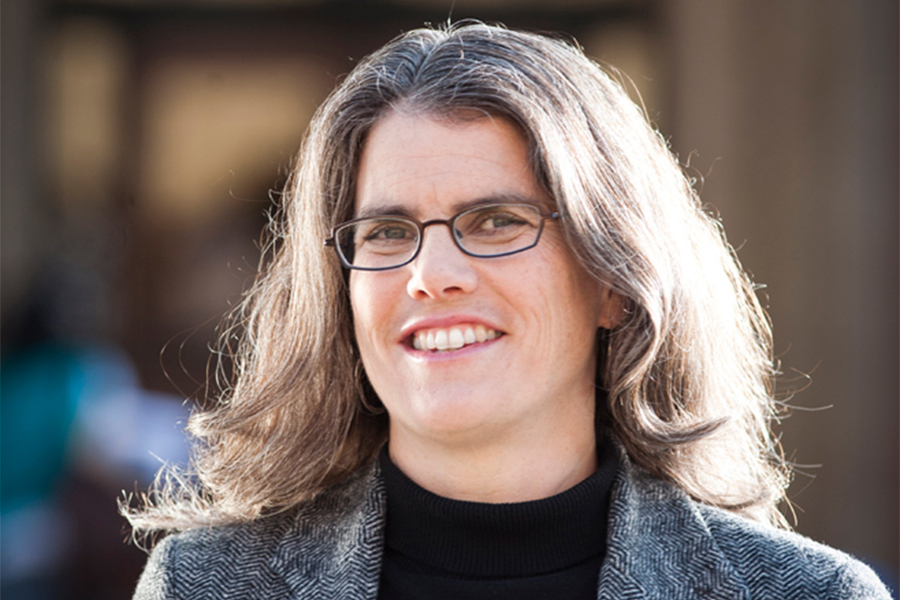
Nobel laureate Andrea Ghez received a BS in physics at MIT in 1987. She is currently a professor of physics and astronomy at the University of California at Los Angeles.
Photo: Christopher Dibble
Astrophysicist Andrea Ghez '87 has been awarded the 2020 Nobel Prize in Physics, announced today by the Royal Swedish Academy of Sciences in Stockholm. She shares half of the prize with Reinhard Genzel, "for the discovery of a supermassive compact object at the center of our galaxy." The other half of the prize was awarded to Roger Penrose, "for the discovery that black hole formation is a robust prediction of the general theory of relativity."
Ghez received a BS in physics at MIT in 1987, where she started out majoring mathematics before changing to physics. She received her PhD at Caltech in 1992, and is currently a professor of physics and astronomy at the University of California at Los Angeles.
She is known for her pioneering work in using high spatial-resolution imaging techniques to study star-forming regions and the supermassive black hole known as Sagitarrius A* at the center of the Milky Way Galaxy. In particular, she studies the kinematics, or interactions between stars, in order to characterize the extremely dynamic region at the galaxy's center.
Ghez shares half of this year's Nobel Prize in Physics with Genzel, who is professor emeritus of physics at the University of California at Berkeley. Ghez and Genzel each lead a team of astronomers that has focused on mapping the brightest stars at the Milky Way's center, with increasing precision. The two groups have used some of the world's largest and most powerful telescopes to peer through many light years of interstellar gas and dust, to focus on the orbits of stars at the galaxy's center.
Their independent measurements have revealed an incredibly massive, invisible object that appears to be pulling on the stars and flinging them around the galaxy's center at enormous speeds.
Their work, according to today's announcement by the Royal Swedish Academy of Sciences, "has given us the most convincing evidence yet of a supermassive black hole at the centre of the Milky Way."
Penrose, who is awarded the second half of this year's Nobel Prize in physics, is professor emeritus of mathematics at Oxford University. Penrose is known for using ingenious mathematical models to prove that black holes are a direct consequence of Albert Einstein's general theory of relativity. Einstein himself did not believe that black holes could exist. Ten years after Einstein's death, in January 1965, Penrose proved the existence of black holes and described them as objects that hide a gravitational singularity - a concept related to general relativity, in which all the known laws of nature cease to exist.
In the academy's announcement, David Haviland, chair of the Nobel Committee for Physics, stated, "The discoveries of this year's laureates have broken new ground in the study of compact and supermassive objects. But these exotic objects still pose many questions that beg for answers and motivate future research. Not only questions about their inner structure, but also questions about how to test our theory of gravity under the extreme conditions in the immediate vicinity of a black hole."
Ghez is the 38th MIT graduate to win a Nobel Prize, and the fourth woman to win the Nobel Prize in Physics.






